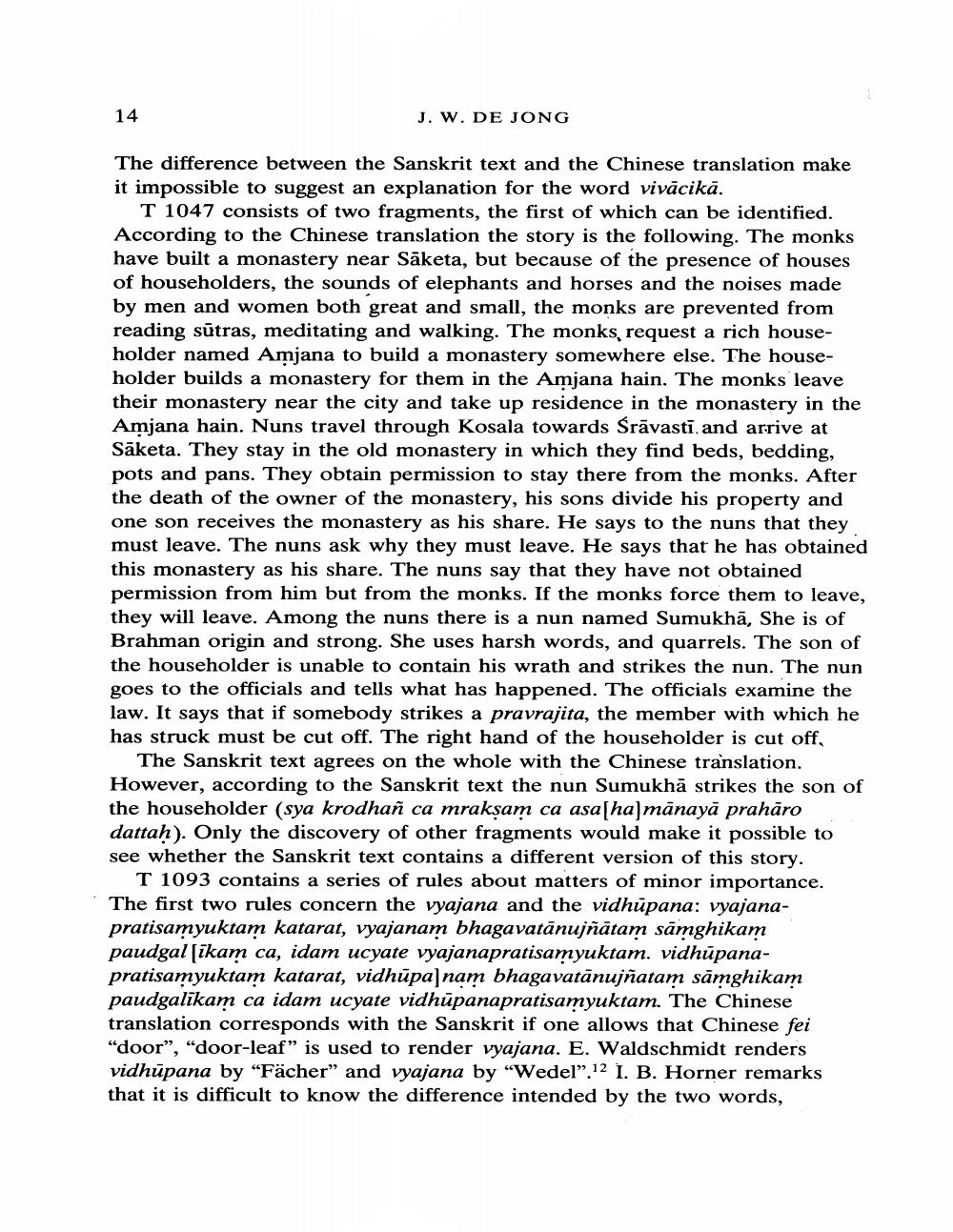Book Title: Three Sanskrit Fragments Of Vinaya Of Sarvastivadins Author(s): J W De Jong Publisher: J W De Jong View full book textPage 4
________________ 14 J. W. DE JONG The difference between the Sanskrit text and the Chinese translation make it impossible to suggest an explanation for the word vivācikā. T 1047 consists of two fragments, the first of which can be identified. According to the Chinese translation the story is the following. The monks have built a monastery near Säketa, but because of the presence of houses of householders, the sounds of elephants and horses and the noises made by men and women both great and small, the monks are prevented from reading sūtras, meditating and walking. The monks, request a rich householder named Amjana to build a monastery somewhere else. The householder builds a monastery for them in the Amjana hain. The monks leave their monastery near the city and take up residence in the monastery in the Amjana hain. Nuns travel through Kosala towards Śrāvasti, and arrive at Sāketa. They stay in the old monastery in which they find beds, bedding, pots and pans. They obtain permission to stay there from the monks. After the death of the owner of the monastery, his sons divide his property and one son receives the monastery as his share. He says to the nuns that they must leave. The nuns ask why they must leave. He says that he has obtained this monastery as his share. The nuns say that they have not obtained permission from him but from the monks. If the monks force them to leave, they will leave. Among the nuns there is a nun named Sumukhā, She is of Brahman origin and strong. She uses harsh words, and quarrels. The son of the householder is unable to contain his wrath and strikes the nun. The nun goes to the officials and tells what has happened. The officials examine the law. It says that if somebody strikes a pravrajita, the member with which he has struck must be cut off. The right hand of the householder is cut off, The Sanskrit text agrees on the whole with the Chinese translation. However, according to the Sanskrit text the nun Sumukhā strikes the son of the householder (sya krodhañ ca mrakşam ca asa hajmānayā prahāro dattah). Only the discovery of other fragments would make it possible to see whether the Sanskrit text contains a different version of this story. T 1093 contains a series of rules about matters of minor importance. The first two rules concern the vyajana and the vidhūpana: vyajanapratisamyuktam katarat, vyajanam bhagavatānujñātam sāmghikam paudgal (īkam ca, idam ucyate vyajanapratisamyuktam. vidhūpanapratisamyuktam katarat, vidhüpa nam bhagavatānujñatam sāmghikam paudgalīkam ca idam ucyate vidhūpanapratisamyuktam. The Chinese translation corresponds with the Sanskrit if one allows that Chinese fei "door”, “door-leaf” is used to render vyajana. E. Waldschmidt renders vidhupana by "Fächer" and vyajana by "Wedel”. 12 I. B. Horner remarks that it is difficult to know the difference intended by the two words,Page Navigation
1 2 3 4 5 6
